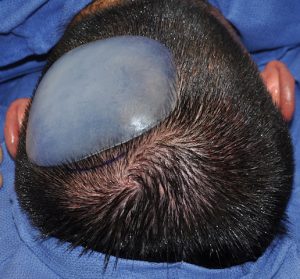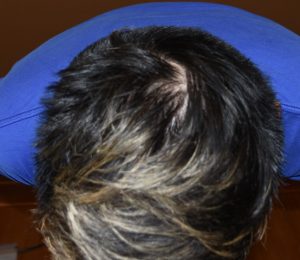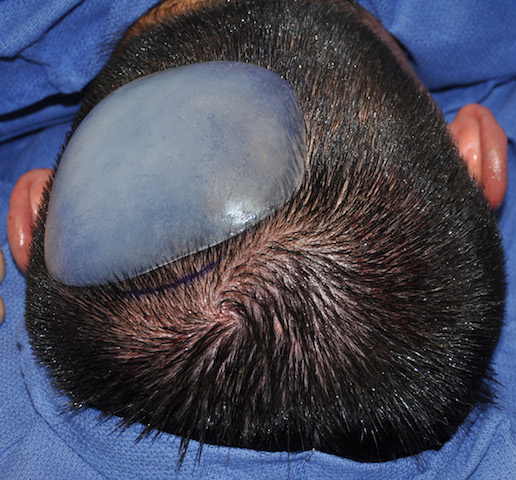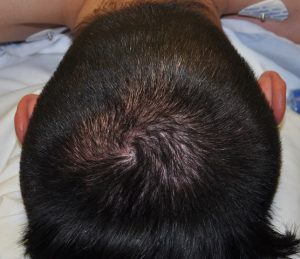Background: One of the most well known aesthetic skull deformities is plagiocephaly. One of the hallmarks of this skull shape abnormality is a flattened side of the back of the head. While the degree of occipital flattening varies widely most patients are other ed when the degree of bone angulation when seen from above exceeds 15 to 20 degrees.
The most ideal treatment of occipital plagiocephaly in an adult is a custom skull implant made from the patient’s 3D CT scan. This provides an exacting fit to the deformed bone in an amount that closely matches the opposite better contoured side. While optimal not every patient may be able to undergo a custom implant approach due to economics or the desire to avoid the radiation from a 3D CT scan. (the two most common reasons I have heard)
As an alternative there is what I call a ‘semi-custom’ implant approach which I have used a few times over the years. This is where a custom implant design is borrowed from another patient whose skull deformity appears to be fairly similar. By so doing the 3D CT scan is avoided and the cost of the implant fabrication is lowered. The flexibility of solid silicone skull implants allows for some individual adaptation to the underling bone from the compression of the overlying scalp.
Case Study: This young male had a significant flattening to the right side of the back of his head. Due to economic reasons he preferred an ‘off-the-shelf’ options for the skull implant design. Even though no such skull implants actually exist, I have a ‘catalog’ of occipital skull implant designs that can be printed out for surgery.


Using another patient’s custom implant design is certainly not as ideal as having one made specifically for your own bony anatomy. But given that the skull is a largely convex shape (even if some of it is flat), the solid silicone implant is very adaptable, and if one can live with less than an ideal result this could be a good option for the right patient.
Case Highlights:
1) Occipital plagiocephaly is associated with some degree of flatness on one side of the back of the head and a more forward ipsilateral ear position.
2) The optimal treatment of unilateral occipital flatness is a custom skull designed from the patient’s 3D CT scan.
3) For the sake of economy a semi-custom skull implant in the properly selected patient may be able to be successfully used.
Dr. Barry Eppley
Indianapolis, Indiana




